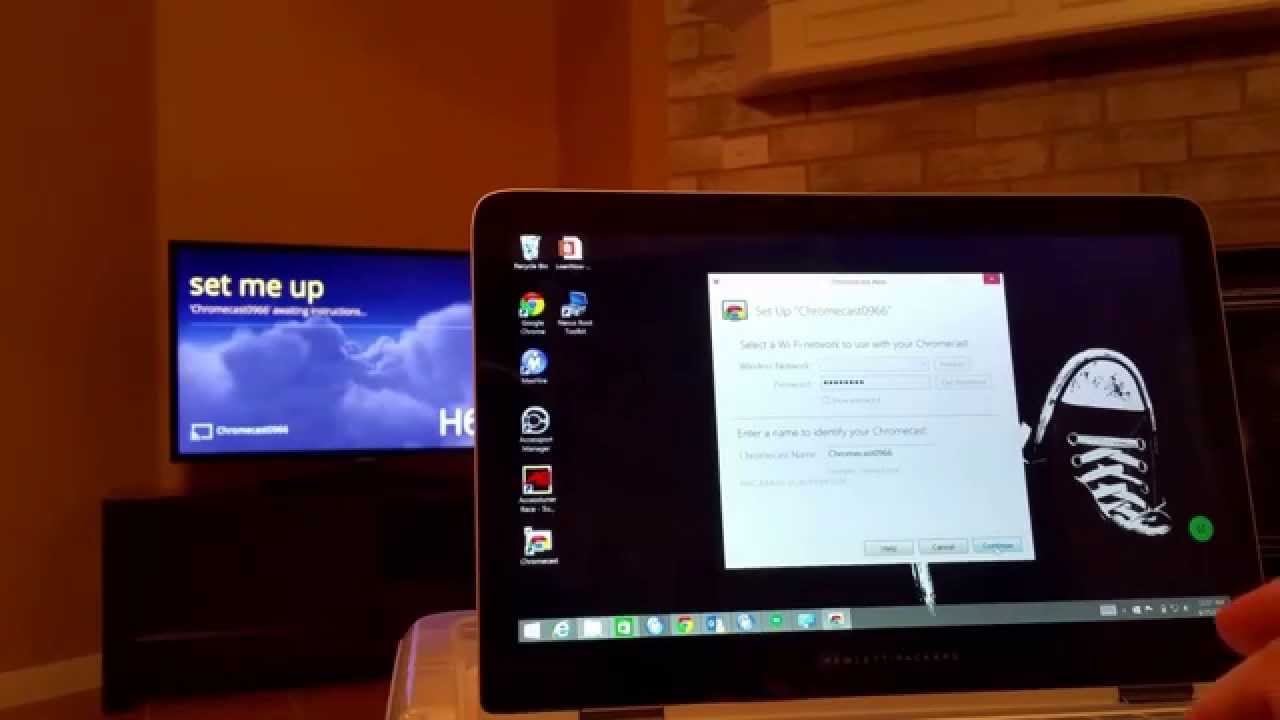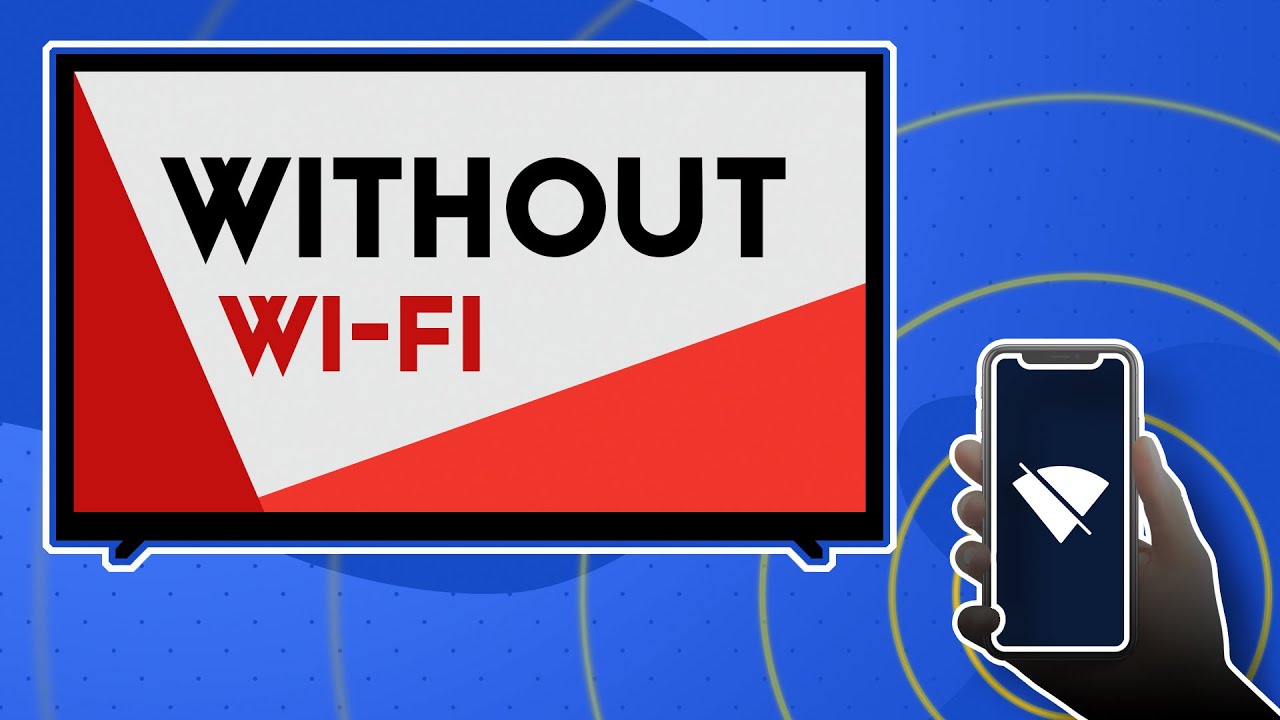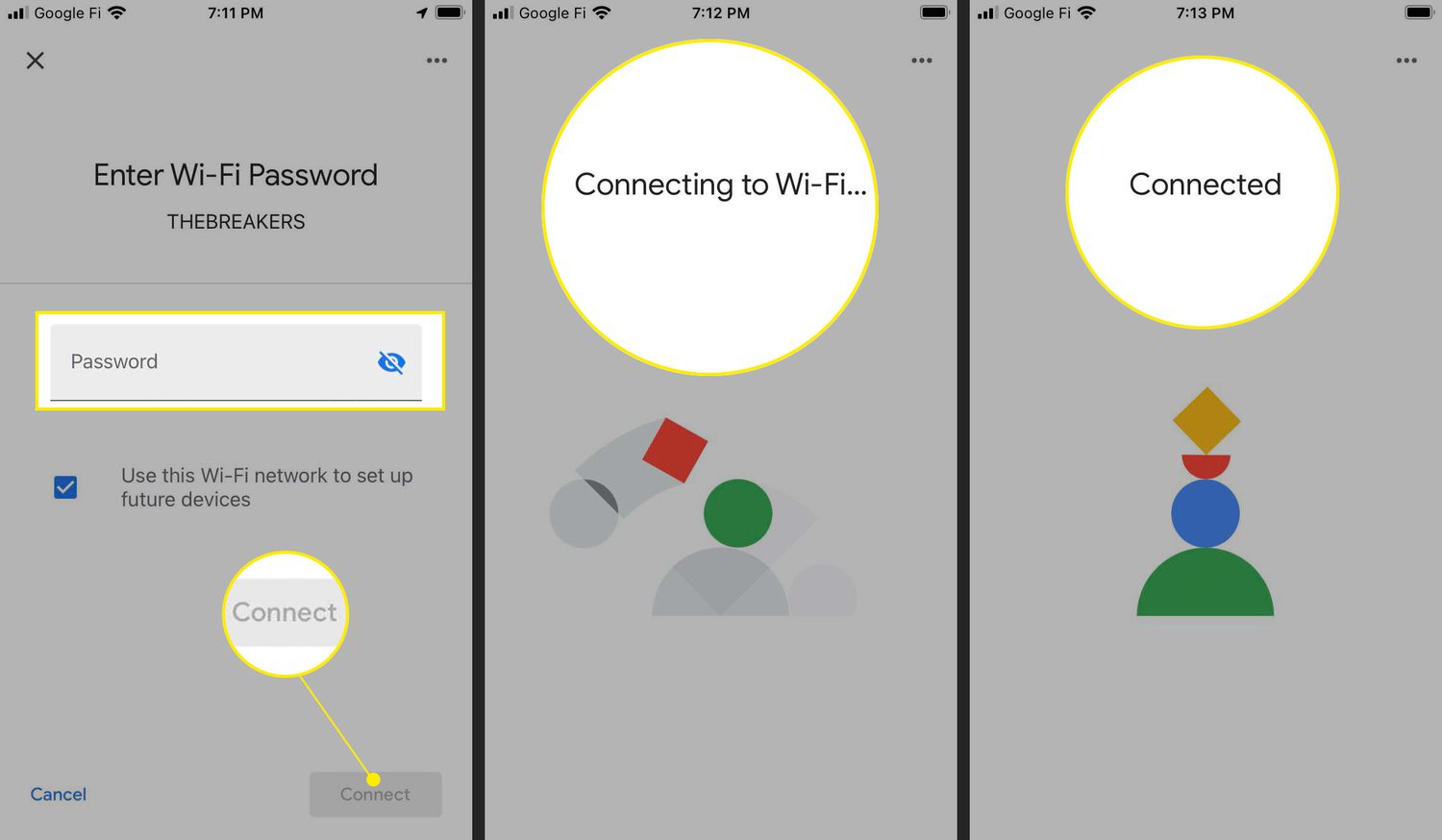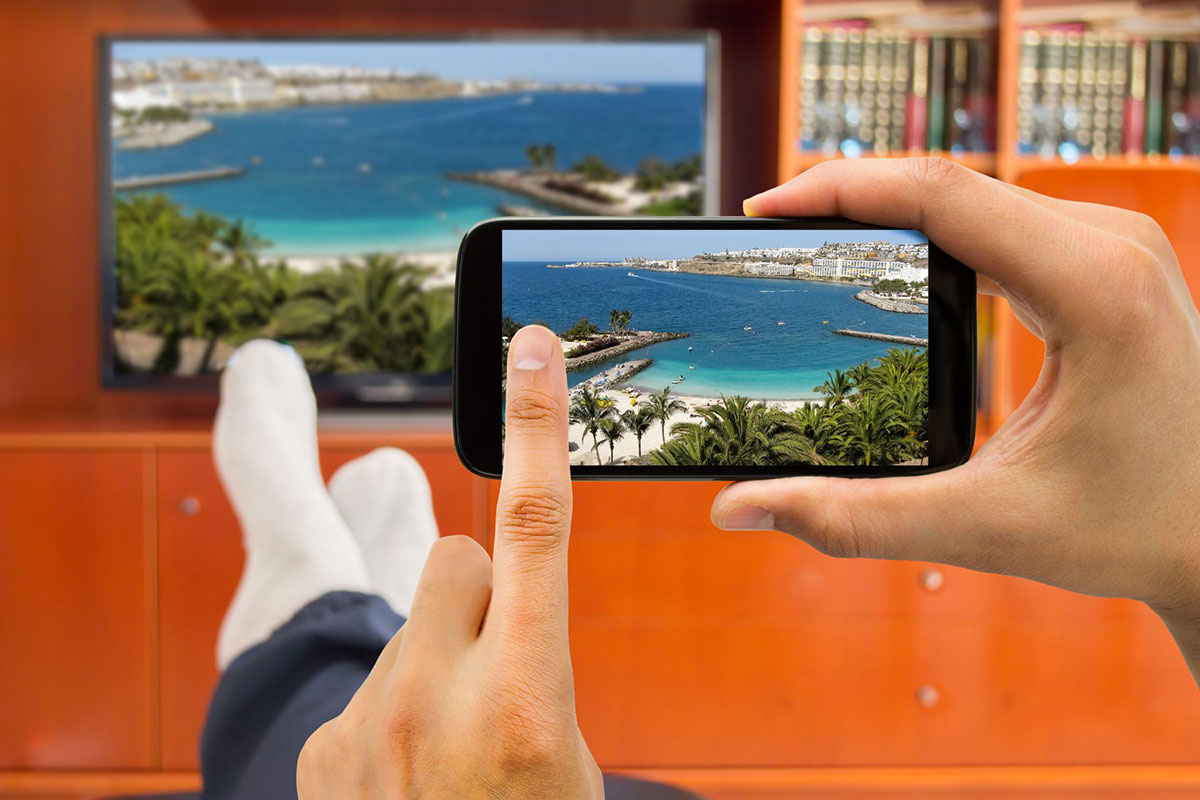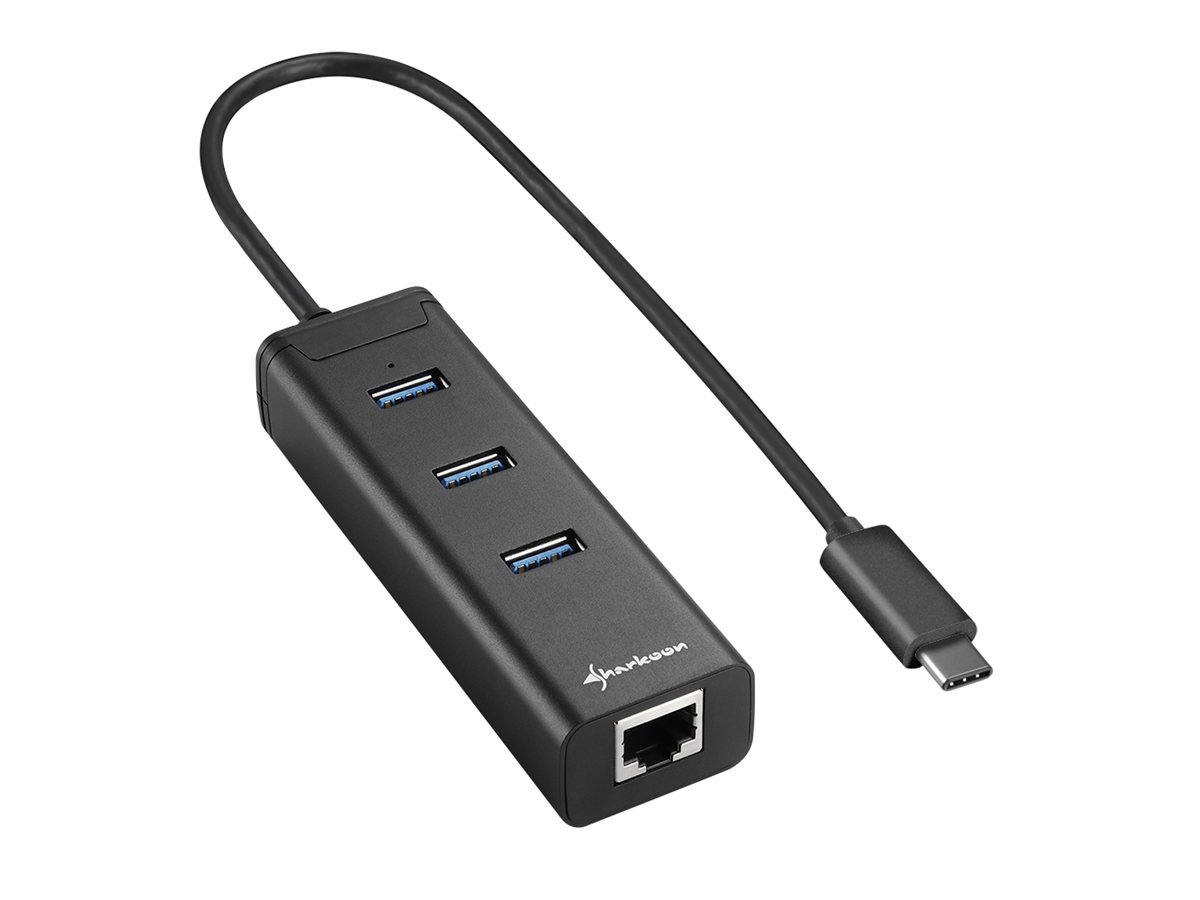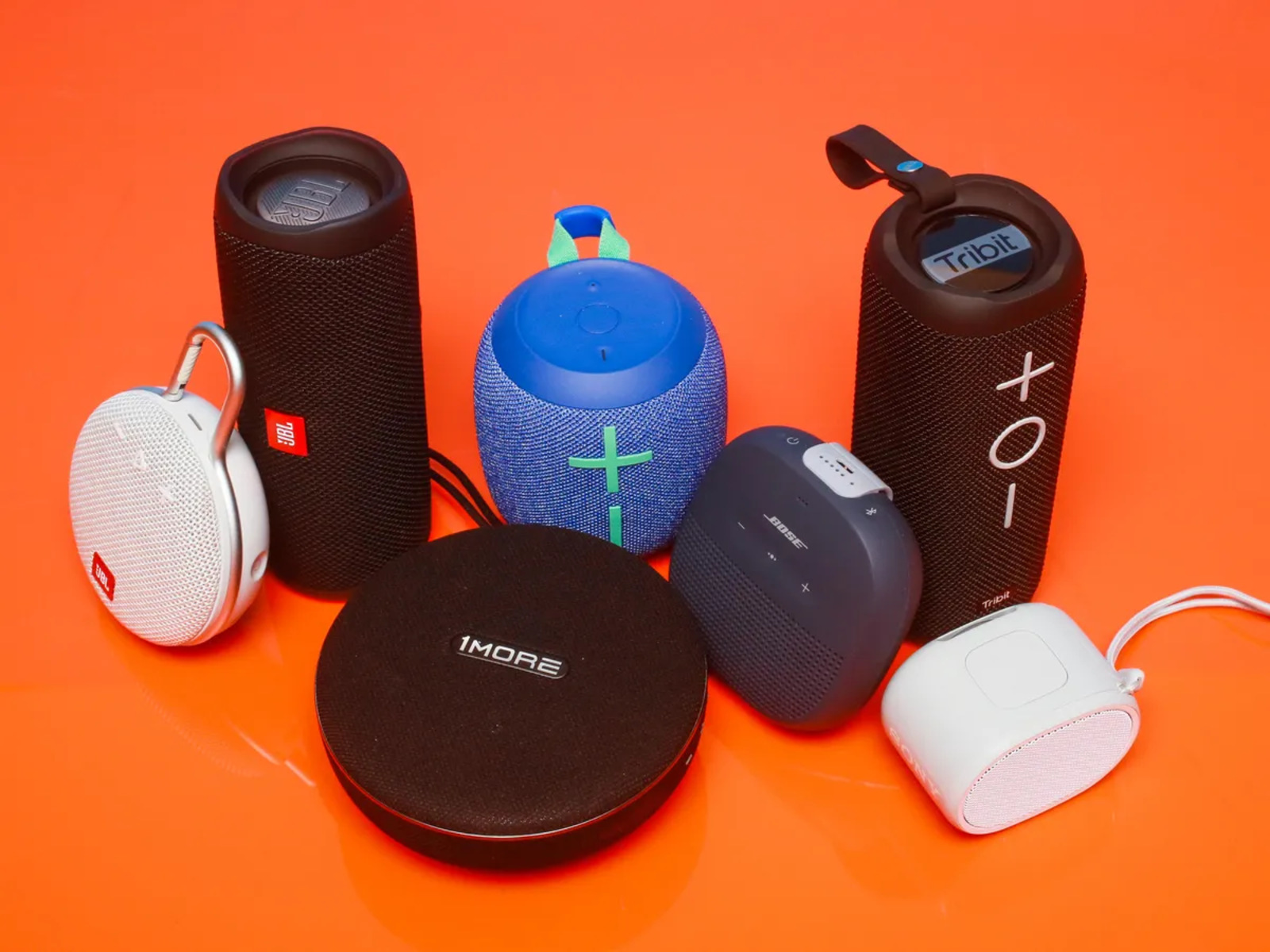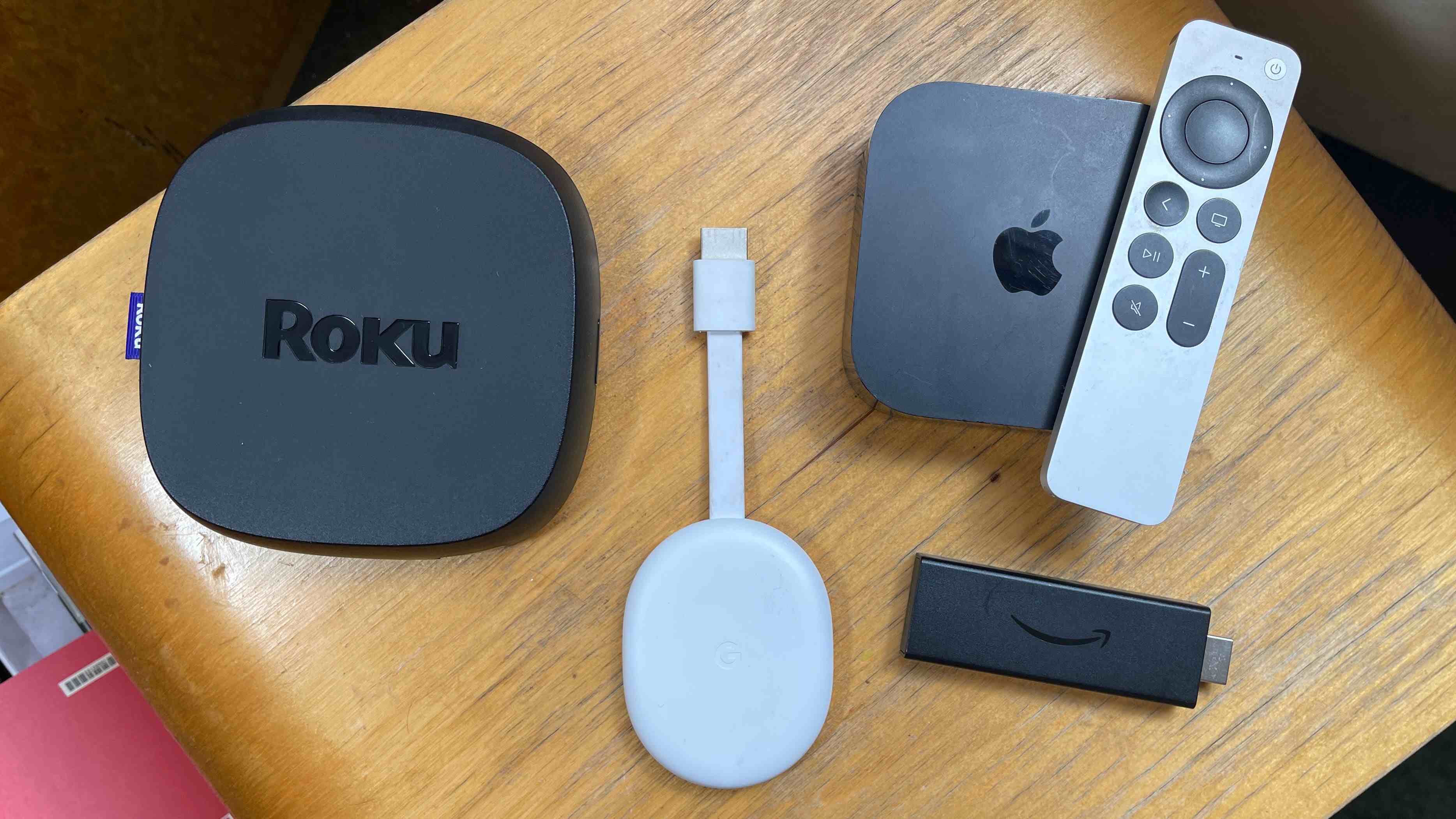Introduction
The Chromecast is a popular streaming device that allows users to connect their mobile devices or computers to a TV, enabling them to cast and enjoy a wide range of media content on the big screen. Traditionally, Chromecast relies on a Wi-Fi connection to connect to the internet and stream content. However, there may be situations where Wi-Fi is not available or unreliable, making it difficult to use Chromecast.
Fortunately, there are alternative methods to use Chromecast without Wi-Fi. In this article, we will explore how to utilize Chromecast using a personal hotspot or a wired Ethernet connection. These methods can come in handy when you are traveling, staying at a location without Wi-Fi, or experiencing Wi-Fi connectivity issues.
By following the instructions provided, you can learn how to set up and connect your Chromecast to a personal hotspot or an Ethernet connection, ensuring that you can still enjoy your favorite movies, TV shows, music, and more on your TV screen.
So, if you find yourself in a situation where Wi-Fi is not available or reliable, don’t worry. In the following sections, we will guide you step-by-step on how to Chromecast without Wi-Fi using alternative methods, allowing you to enjoy a seamless streaming experience.
What is Chromecast?
Chromecast is a streaming device developed by Google that allows users to wirelessly stream media content from their smartphones, tablets, or computers to their television screens. With Chromecast, you can enjoy a vast array of entertainment options, including movies, TV shows, music, and even games, directly on your TV.
Unlike traditional set-top boxes or streaming devices, Chromecast does not have its own user interface or built-in apps. Instead, it relies on your mobile device or computer as a remote control, where you can select and control the content you want to stream. The device itself simply acts as a bridge between your device and the TV, allowing for seamless content casting.
To use Chromecast, you need a Wi-Fi network connection and a compatible device with a casting feature. Chromecast supports both Android and iOS devices, as well as desktop computers with the Chrome browser installed. By connecting your device to the same Wi-Fi network as the Chromecast, you can easily cast content from various streaming apps and websites, such as Netflix, YouTube, Spotify, and more.
Chromecast offers various advantages over traditional streaming devices. Firstly, it is compact and portable, making it easy to take with you wherever you go. Additionally, since the actual streaming is done from your device, it allows for multitasking, enabling you to continue using your device for other purposes while the content is being streamed on the TV.
With the rise of smart TVs and streaming services, Chromecast has become an essential device for those looking to enhance their home entertainment experience. Its simplicity, versatility, and wide compatibility make it a popular choice among users who want a convenient and cost-effective way to stream media content on their TV screens.
In the next sections, we will explore alternative methods to use Chromecast without relying on a Wi-Fi network, allowing you to enjoy your favorite content even in situations where Wi-Fi is not available or reliable.
Using Chromecast with a Personal Hotspot
When Wi-Fi is not available or unreliable, you can still use Chromecast by creating a personal hotspot using your mobile device. A personal hotspot allows you to share your mobile data connection with other devices, including your Chromecast.
Setting up a personal hotspot on your mobile device may vary depending on the operating system, but the general steps are similar. Here’s how to set up a personal hotspot on popular mobile operating systems:
- Android: Open the Settings app and go to the “Connections” or “Network & internet” section. Look for the “Hotspot & tethering” option and tap on it. Enable the “Portable Wi-Fi hotspot” or “Wi-Fi hotspot” feature and customize the hotspot name and password if desired.
- iOS (iPhone): Open the Settings app and go to the “Personal Hotspot” section. Enable the “Personal Hotspot” feature and set a Wi-Fi password if prompted.
Once you have set up a personal hotspot on your mobile device, you can proceed to connect your Chromecast. Keep in mind that using a personal hotspot to stream media content may consume a significant amount of data, so it is recommended to have an adequate mobile data plan to avoid unexpected charges.
To connect Chromecast to your personal hotspot, follow these steps:
- Plug your Chromecast into an available HDMI port on your TV.
- Ensure that your mobile device and Chromecast are connected to the same Wi-Fi network.
- Open the Google Home app on your mobile device.
- Tap on the “+” or “Add” button to set up a new device.
- Select “Set up device” and choose “Set up new devices in your home.”
- Follow the on-screen instructions to connect your Chromecast to your personal hotspot.
Once the connection is established, you can start casting content to your Chromecast as you would with a regular Wi-Fi connection. Launch compatible streaming apps or websites on your mobile device, tap on the casting icon, and select your Chromecast from the list of available devices. The content will then be streamed to your TV through the personal hotspot connection.
Keep in mind that using a personal hotspot may impact the stability and quality of the streaming experience, depending on the strength and speeds of your mobile data connection. If possible, try to have a reliable and high-speed mobile data network for optimal performance.
In the following sections, we will explore another alternative method to use Chromecast without Wi-Fi, which involves using a wired Ethernet connection.
Setting up a Personal Hotspot on Mobile Devices
Creating a personal hotspot on your mobile device allows you to share your mobile data connection with other devices, including your Chromecast. The process of setting up a personal hotspot may vary depending on the operating system of your mobile device. Here’s a general outline of how to set up a personal hotspot on popular mobile operating systems:
- Android:
- Open the Settings app on your Android device.
- Go to the “Connections” or “Network & internet” section.
- Look for the “Hotspot & tethering” option and tap on it.
- Enable the “Portable Wi-Fi hotspot” or “Wi-Fi hotspot” feature.
- You can customize the hotspot name and password if desired.
- iOS (iPhone):
- Open the Settings app on your iPhone.
- Go to the “Personal Hotspot” section.
- Enable the “Personal Hotspot” feature.
- You may need to set a Wi-Fi password if prompted.
Once the personal hotspot is set up on your mobile device, you can proceed to connect your Chromecast. But before doing that, it’s essential to keep in mind that using a personal hotspot to stream media content may consume a significant amount of data. Therefore, it is recommended to have an adequate mobile data plan to avoid unexpected charges.
In addition, some mobile carriers or data plans may have restrictions or additional charges for using a personal hotspot. It’s important to check with your mobile carrier to ensure you have the necessary plan or add-ons for using a personal hotspot with your Chromecast.
Once you have confirmed that you have the necessary data plan and any applicable add-ons, you can proceed to connect your Chromecast to the personal hotspot on your mobile device.
Connecting Chromecast to a personal hotspot is a straightforward process. Follow these steps:
- Plug your Chromecast into an available HDMI port on your TV.
- Make sure your mobile device and Chromecast are both connected to the same Wi-Fi network.
- Open the Google Home app on your mobile device.
- Tap on the “+” or “Add” button to set up a new device.
- Select “Set up device” and choose “Set up new devices in your home.”
- Follow the on-screen instructions to connect your Chromecast to the personal hotspot on your mobile device.
Once the connection is established, you can start casting content to your Chromecast as you would with a regular Wi-Fi connection. Simply launch compatible streaming apps or websites on your mobile device, tap on the casting icon, and select your Chromecast from the list of available devices. The content will then be streamed to your TV through the personal hotspot connection.
Keep in mind that using a personal hotspot may impact the stability and quality of the streaming experience, depending on the strength and speeds of your mobile data connection. If possible, try to have a reliable and high-speed mobile data network for optimal performance.
In the next section, we will explore another alternative method to use Chromecast without Wi-Fi, which involves using a wired Ethernet connection.
Connecting Chromecast to a Personal Hotspot
Once you have set up a personal hotspot on your mobile device, you can proceed to connect your Chromecast. Connecting Chromecast to a personal hotspot is a simple process, and it allows you to enjoy your favorite media content even without a Wi-Fi network.
To connect your Chromecast to a personal hotspot, follow these steps:
- Plug your Chromecast into an available HDMI port on your TV.
- Make sure that your mobile device and Chromecast are both connected to the same personal hotspot network.
- Open the Google Home app on your mobile device.
- Tap on the “+” or “Add” button to set up a new device.
- Select “Set up device” and choose “Set up new devices in your home.”
- Follow the on-screen instructions to connect your Chromecast to the personal hotspot network on your mobile device.
During the setup process, the Google Home app will guide you through the necessary steps to connect your Chromecast to the personal hotspot. This typically involves selecting the correct Wi-Fi network and entering the network password if prompted. Once the connection is established, your Chromecast will be ready to stream content.
It’s important to note that using a personal hotspot to stream media content may consume a significant amount of data. Therefore, make sure you have a sufficient mobile data plan to avoid unexpected charges. Additionally, remember that using a personal hotspot for streaming may impact the stability and quality of the streaming experience, depending on the speed and coverage of your mobile data network.
Once your Chromecast is connected to the personal hotspot, you can start casting content from your mobile device. Launch compatible streaming apps or websites on your device, tap on the casting icon, and select your Chromecast from the list of available devices. The content will then be streamed to your TV through the personal hotspot connection.
While using a personal hotspot allows you to use Chromecast without relying on Wi-Fi, it’s important to be aware of the limitations. Mobile data networks may not always provide the same reliability and speed as a dedicated Wi-Fi connection. Therefore, it’s recommended to have a stable and high-speed mobile data connection for the best streaming experience.
In the following section, we will explore another alternative method to use Chromecast without Wi-Fi – using a wired Ethernet connection.
Casting Content to Chromecast via a Personal Hotspot
Once your Chromecast is connected to a personal hotspot, you can begin casting and enjoying your favorite content on the big screen of your TV. Whether it’s watching movies, TV shows, or streaming music, casting content to Chromecast via a personal hotspot is a straightforward process.
To cast content to your Chromecast using a personal hotspot, follow these steps:
- Ensure that your mobile device is connected to the same personal hotspot network as your Chromecast.
- Open a compatible streaming app or website on your mobile device that supports Chromecast casting.
- Look for the casting icon within the app or website. It is usually located in the top or bottom corner of the screen.
- Tap on the casting icon and select your Chromecast from the list of available devices.
- Choose the desired content you want to cast, such as a movie, TV show, or music playlist.
- The content will now start playing on your TV through the Chromecast connected to the personal hotspot.
Once the content is successfully cast to your Chromecast, you can control the playback using your mobile device as a remote. You can pause, play, adjust the volume, and even browse for other content to cast while the current content is playing on your TV.
It’s important to remember that streaming media content through a personal hotspot may utilize a significant amount of mobile data, depending on the quality and duration of the content. Therefore, keep track of your data usage and ensure that you have an adequate mobile data plan to avoid any unexpected charges.
Additionally, the streaming experience may vary depending on the strength and speed of your mobile data connection. If you’re experiencing buffering or playback issues, it’s recommended to have a reliable and high-speed mobile data network to ensure the best performance.
Using Chromecast with a personal hotspot allows you to enjoy your favorite content on your TV, even when a Wi-Fi network is not available or reliable. It provides flexibility and convenience, especially when you’re on-the-go or in a location without a stable internet connection.
In the next section, we will explore another alternative method to use Chromecast without Wi-Fi, which involves utilizing a wired Ethernet connection.
Using Chromecast with a Wired Ethernet Connection
If you don’t have access to a Wi-Fi network or prefer a more stable and direct connection for your Chromecast, you can use a wired Ethernet connection instead. Using an Ethernet connection can offer faster and more reliable streaming, making it an excellent option for situations where Wi-Fi is not available or reliable.
To use Chromecast with a wired Ethernet connection, you’ll need an Ethernet adapter specifically designed for Chromecast. Here’s how to set up Chromecast with an Ethernet adapter:
- Ensure that your Chromecast is powered off and unplugged from the TV.
- Plug the Ethernet adapter into the power port of your Chromecast.
- Connect one end of an Ethernet cable to the Ethernet port of the adapter.
- Connect the other end of the Ethernet cable to an available Ethernet port on your router or modem.
- Plug the Chromecast into an available HDMI port on your TV.
- Power on your TV and switch the input to the HDMI port where your Chromecast is connected.
Once the setup is complete, your Chromecast will be connected to the internet through the wired Ethernet connection. This eliminates the need for a Wi-Fi network and allows for a more stable and reliable streaming experience.
It’s important to note that not all Chromecast models support Ethernet connections out of the box. If you have an older Chromecast model, you may need to purchase a separate Ethernet adapter specifically designed for Chromecast. Ensure that the Ethernet adapter is compatible with your Chromecast model before making a purchase.
Using Chromecast with a wired Ethernet connection is a straightforward process. Once your Chromecast is connected to the Ethernet network, you can start casting content from your mobile device or computer as you would with a regular Wi-Fi connection.
Launch compatible streaming apps or websites on your device, tap on the casting icon, and select your Chromecast from the list of available devices. The content will then be streamed to your TV through the wired Ethernet connection, providing you with a stable and reliable streaming experience.
Using a wired Ethernet connection has its advantages, such as faster and more consistent streaming speeds compared to relying on a Wi-Fi network. However, it’s worth noting that you lose the convenience of mobility since your Chromecast will need to be physically connected to an Ethernet cable.
In the following section, we will discuss how to cast content to your Chromecast through the Ethernet connection.
Setting up Chromecast with an Ethernet Adapter
If you want to use Chromecast with a wired Ethernet connection, you’ll need to set it up with an Ethernet adapter. The Ethernet adapter allows you to connect your Chromecast directly to your router or modem using an Ethernet cable, ensuring a stable and reliable network connection. Here’s how to set up Chromecast with an Ethernet adapter:
- Ensure that your Chromecast is powered off and disconnected from the TV.
- Plug the Ethernet adapter into the power port of your Chromecast.
- Connect one end of an Ethernet cable to the Ethernet port of the adapter.
- Connect the other end of the Ethernet cable to an available Ethernet port on your router or modem.
- Plug the Chromecast into an available HDMI port on your TV.
- Power on your TV and switch the input to the HDMI port where your Chromecast is connected.
Once the setup is complete, your Chromecast will be ready to use with a wired Ethernet connection. The Ethernet adapter provides a direct, reliable connection for your Chromecast, eliminating the need for a Wi-Fi network.
Note that not all Chromecast models have a built-in Ethernet port. If you have an older Chromecast model without an Ethernet port, you’ll need to purchase a separate Ethernet adapter that is specifically designed for Chromecast.
Before purchasing an Ethernet adapter, make sure it is compatible with your Chromecast model. You can find information on compatible Ethernet adapters on the official Chromecast support website or by checking the manufacturer’s specifications.
Once your Chromecast is connected to the Ethernet network, you can use it to stream various media content on your TV. Launch compatible streaming apps on your mobile device or computer, tap on the casting icon, and select your Chromecast from the list of available devices. The content will then be streamed to your TV through the wired Ethernet connection.
Using Chromecast with a wired Ethernet connection offers several advantages, including faster and more reliable streaming speeds compared to Wi-Fi connections. It can result in a smoother streaming experience, especially for high-definition or 4K content. Additionally, using a wired connection eliminates potential interference or signal loss issues that can occur with Wi-Fi networks.
By setting up your Chromecast with an Ethernet adapter, you can ensure a stable and seamless streaming experience, even without relying on a Wi-Fi network.
In the next section, we will discuss how to cast content to your Chromecast through the Ethernet connection.
Connecting Chromecast to an Ethernet Connection
Once you have set up your Chromecast with an Ethernet adapter, the next step is to connect it to an Ethernet connection. This will allow your Chromecast to establish a direct and stable connection to the Internet, ensuring smooth and reliable streaming. To connect your Chromecast to an Ethernet connection, follow these steps:
- Ensure that your Chromecast is plugged into an available HDMI port on your TV.
- Plug one end of the Ethernet cable into the Ethernet adapter connected to your Chromecast.
- Connect the other end of the Ethernet cable to an available Ethernet port on your router or modem.
- Power on your TV and switch the input to the HDMI port where your Chromecast is connected.
After the connection is established, your Chromecast will automatically detect and connect to the Ethernet network. This eliminates the need for a Wi-Fi network and allows for a more stable and reliable streaming experience.
It’s important to note that using an Ethernet connection offers advantages such as faster and more consistent streaming speeds compared to relying on a Wi-Fi network. It also helps to minimize the chances of interference or signal loss that can occur with wireless connections.
Now that your Chromecast is connected to the Ethernet network, you can start casting content from your mobile device or computer. Launch compatible streaming apps or websites on your device, tap on the casting icon, and select your Chromecast from the list of available devices. The content will then be streamed to your TV through the Ethernet connection.
Using Chromecast with an Ethernet connection provides a reliable and efficient way to enjoy your favorite media content on the big screen. Whether you’re streaming movies, TV shows, or music, the Ethernet connection ensures a seamless and uninterrupted streaming experience.
Keep in mind that using an Ethernet connection requires your Chromecast to be physically connected to the Ethernet cable, limiting its mobility. However, if stability and performance are your top priorities, then using an Ethernet connection is an excellent choice.
In the next section, we will explore how to troubleshoot common issues that may arise when using Chromecast without Wi-Fi.
Casting Content to Chromecast via Ethernet Connection
Now that your Chromecast is connected to the Ethernet network, you can easily cast and enjoy your favorite content on your TV. Casting content to Chromecast via an Ethernet connection is a straightforward process that allows for a reliable and seamless streaming experience.
To cast content to your Chromecast using an Ethernet connection, follow these steps:
- Ensure that your mobile device or computer is connected to the same network as your Chromecast.
- Open a compatible streaming app or website on your device.
- Look for the casting icon within the app or website. It is typically located in the top or bottom corner of the screen.
- Tap on the casting icon and select your Chromecast from the list of available devices.
- Select the content you want to cast, such as a movie, TV show, or music playlist.
- The content will begin streaming on your TV through the Chromecast connected via the Ethernet connection.
Once the content is successfully cast to your Chromecast, you can control playback using your mobile device or computer as a remote. You can pause, play, adjust the volume, and even browse for other content to cast while the current content is playing on your TV.
Casting content via an Ethernet connection offers several advantages, including faster and more reliable streaming speeds compared to Wi-Fi connections. The direct wired connection ensures a stable and consistent stream, allowing for smoother playback, especially when streaming high-definition or 4K content.
With the Ethernet connection, you can enjoy a reliable streaming experience with minimal interruptions or buffering. It eliminates potential issues related to Wi-Fi signal strength or network congestion, providing a more seamless and enjoyable viewing experience.
It’s important to note that while using an Ethernet connection offers stable and reliable streaming, your casting experience may still be affected by the bandwidth and speed of your internet connection. Ensure that you have a sufficiently fast internet plan to support the quality of content you wish to stream.
By utilizing the Chromecast with an Ethernet connection, you can take full advantage of its streaming capabilities without the need for a Wi-Fi network. Whether you’re watching movies, TV shows, or streaming music, you can enjoy a smooth and high-quality streaming experience on your TV screen.
In the next section, we will discuss some troubleshooting tips to help resolve common issues that may arise when using Chromecast without Wi-Fi.
Troubleshooting Tips for Chromecast Without Wi-Fi
Using Chromecast without Wi-Fi can sometimes present certain challenges or issues. However, with the right troubleshooting techniques, you can overcome these obstacles and enjoy a smooth streaming experience. Here are some troubleshooting tips to help you resolve common issues when using Chromecast without Wi-Fi:
1. Ensure Proper Connections:
Double-check that all the necessary connections are properly made. Make sure your Chromecast is securely plugged into an HDMI port on your TV, and if using an Ethernet connection, verify that the Ethernet cable is securely connected to both your Chromecast and the router/modem.
2. Restart Devices:
If you’re experiencing problems, try restarting your Chromecast, mobile device, and router/modem. Sometimes, a simple reboot can resolve connectivity issues and restore normal functioning.
3. Check Network Settings:
Ensure that your Chromecast and your controlling device are connected to the same network, whether it’s a personal hotspot or an Ethernet connection. Verify that your mobile device or computer is connected to the correct network to cast content to the Chromecast.
4. Update Firmware and Apps:
Keeping your Chromecast up to date with the latest firmware and ensuring that your casting apps are updated can help resolve compatibility issues and improve performance. Check for any available updates in the Google Home app and the respective streaming apps you use.
5. Clear Cache and Data:
If you’re encountering glitches or performance issues, try clearing the cache and data of the Google Home app and the streaming apps you’re using. This can help resolve any temporary issues related to app data or cache conflicts.
6. Reset Chromecast:
If all else fails, a factory reset of your Chromecast might be necessary. Keep in mind that this will erase all settings and data associated with your Chromecast, so be sure to set it up again afterward.
7. Check Data Usage and Connection Quality:
If using a personal hotspot, monitor your mobile data usage to avoid excessive charges. Additionally, ensure that your mobile data connection is stable and has sufficient bandwidth to support streaming without interruptions.
8. Consider Alternative Methods:
If you continue to experience connectivity or performance issues, consider using alternative methods, such as downloading content locally onto your device and using a USB-to-HDMI adapter to directly connect your device to your TV.
By following these troubleshooting tips, you can overcome common challenges and enjoy uninterrupted streaming on your Chromecast without Wi-Fi. Remember, each situation may be unique, so it’s essential to troubleshoot and adapt based on your specific circumstances.
Now that you have a range of troubleshooting techniques at your disposal, you can confidently use your Chromecast without Wi-Fi and enjoy your favorite content on the big screen of your TV.
Conclusion
In conclusion, Chromecast is a versatile streaming device that allows users to wirelessly cast and enjoy a wide range of media content on their TV screens. However, there are instances where Wi-Fi may not be available or reliable, making it challenging to use Chromecast.
Fortunately, there are alternative methods to use Chromecast without Wi-Fi. By setting up a personal hotspot on your mobile device or using a wired Ethernet connection, you can still connect your Chromecast and enjoy your favorite content on the big screen.
Using a personal hotspot allows you to share your mobile data connection with your Chromecast, enabling you to cast content even without a traditional Wi-Fi network. By following the steps to set up and connect your Chromecast to a personal hotspot, you can enjoy a seamless streaming experience on your TV.
Alternatively, utilizing a wired Ethernet connection with the help of an Ethernet adapter provides a more stable and reliable connection for your Chromecast. By connecting your Chromecast directly to your router or modem, you can experience faster and more consistent streaming speeds.
Throughout this article, we have provided step-by-step instructions on how to set up and connect your Chromecast without Wi-Fi using these alternative methods. We have also discussed troubleshooting tips to help you overcome common issues that may arise when using Chromecast without Wi-Fi.
Whether you’re traveling, staying in a location without Wi-Fi, or experiencing Wi-Fi connectivity problems, these methods allow you to continue enjoying your favorite movies, TV shows, music, and more on your TV screen.
Remember to consider your data usage when using a personal hotspot and ensure you have an adequate mobile data plan. Additionally, keep in mind that the stability and speed of your mobile data connection or Ethernet network may impact the quality of your streaming experience.
With the flexibility of using Chromecast without Wi-Fi, you can enhance your home entertainment setup and enjoy a seamless and immersive streaming experience wherever you are.







